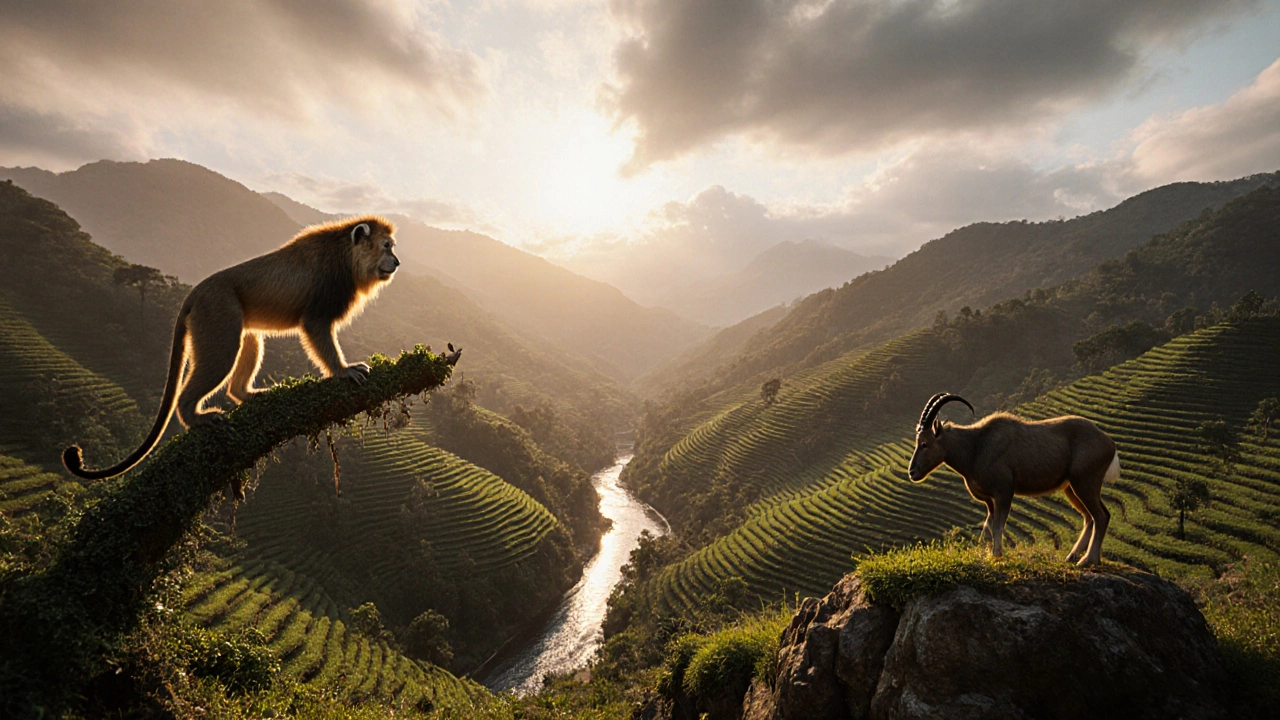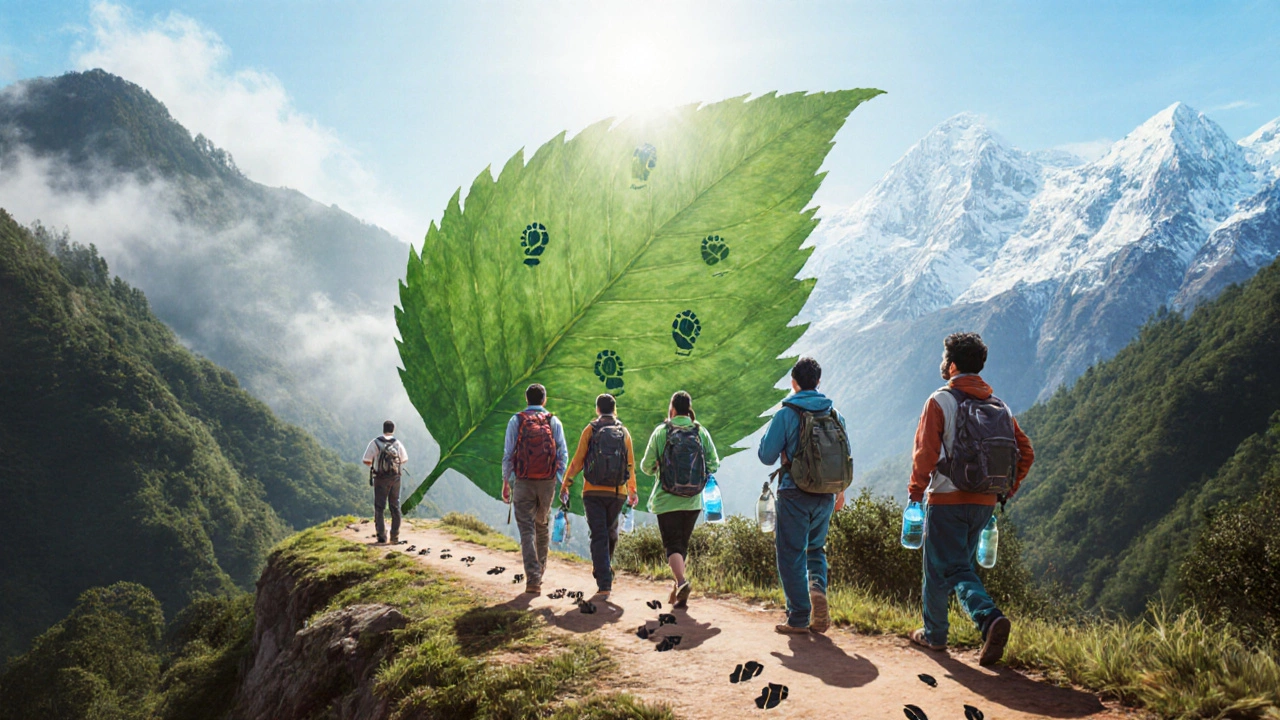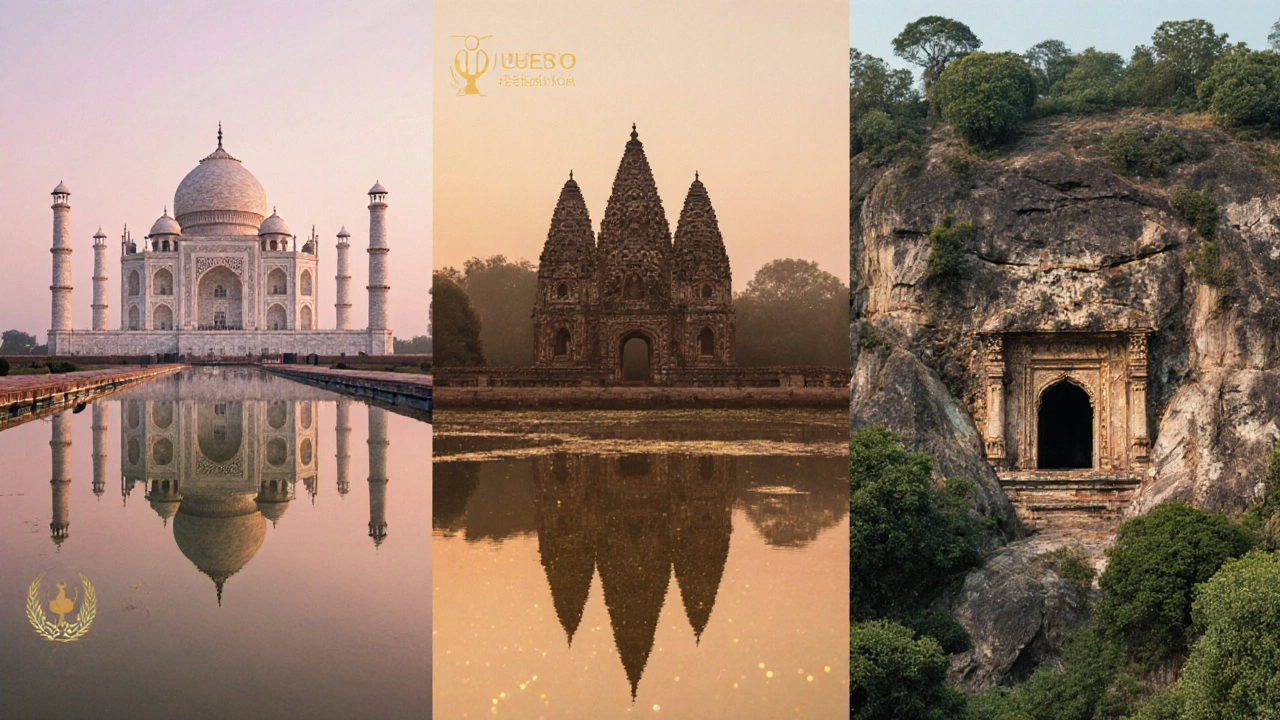Seven Natural Heritage Sites in India - UNESCO World Heritage List

Natural heritage sites in India are those locations that UNESCO has recognized for their outstanding natural value, ranging from towering mountain ranges to sprawling wetlands. These sites protect unique ecosystems, rare species, and landscapes that shape the country’s ecological identity.
Key Takeaways
- India boasts seven UNESCO-recognized natural heritage sites.
- Each site safeguards distinct flora, fauna, and cultural connections.
- Visitor guidelines help preserve these fragile environments.
- Conservation challenges include climate change, poaching, and tourism pressure.
- Understanding each park’s story enhances responsible travel.
Why These Sites Matter
UNESCO’s World Heritage programme highlights places that are "of outstanding universal value." For India, the seven natural sites illustrate the country’s biodiversity hotspots, ranging from tropical rainforests in the south to alpine meadows in the north. Protecting them isn’t just about tourism; it’s about preserving genetic reservoirs, water sources, and cultural traditions tied to the land.
Quick Overview of All Seven Sites
| Site | Year Inscribed | States / Union Territory | Key Species | Approx. Area (sqkm) |
|---|---|---|---|---|
| Western Ghats | 2012 | Karnataka, Kerala, Tamil Nadu, Maharashtra, Goa, Gujarat, Karnataka | Lion-tailed macaque, Nilgiri tahr, Malabar pied hornbill | ~150,000 |
| Kaziranga National Park | 1985 | Assam | One-horned rhinoceros, Asian elephant, swamp deer | ~430 |
| Manas Wildlife Sanctuary | 1985 | Assam | Asian black bear, Bengal tiger, pygmy hog | ~950 |
| Keoladeo National Park | 1985 | Rajasthan | Sarus crane, Indian bustard, painted stork | ~29 |
| Sunderbans National Park | 1987 | West Bengal | Bengal tiger, estuarine crocodile, fishing cat | ~1,450 |
| Great Himalayan National Park | 2014 | Himachal Pradesh | Himalayan brown bear, snow leopard, musk deer | ~765 |
| Nanda Devi and Valley of Flowers National Parks | 2022 | Uttarakhand | Snow leopard, Himalayan tahr, blue poppy | ~894 |
1. Western Ghats - The Tropical Sky‑Road
Stretching over 1,600 km along India’s western coast, the Western Ghats are a biodiversity hotspot. More than 7,400 plant species thrive here, over 30% of which are endemic. The region supplies water to major rivers like the Krishna and the Godavari, making it crucial for agriculture downstream.
Best time to visit: October to March, when the monsoon recedes and wildlife is active. Popular gateways include Coorg, Munnar, and Silent Valley. Remember to stick to marked trails - the terrain can be slippery, and off‑road driving harms fragile soil.
2. Kaziranga National Park - Home of the One‑Horned Rhino
Located on the floodplains of the Brahmaputra, Kaziranga National Park hosts the world’s largest population of Indian one‑horned rhinoceros-about two‑thirds of the global count. The park’s grasslands also support over 2.5 million birds.
Visit tip: Early‑morning jeep safaris give the best chance to spot rhinos. Night safaris are also available for viewing nocturnal species, but they require a special permit.

3. Manas Wildlife Sanctuary - The Wild Frontier of Assam
Part of the larger Manas River basin, Manas Wildlife Sanctuary earned UNESCO’s natural heritage label for its pristine forest‑grassland mosaic. It shelters the endangered pygmy hog and the golden langur.
Travel advice: The sanctuary is best explored on foot with a local guide. Guided hikes often include visits to the Manas River’s rapids, which offer a chance to see river otters and giant snakes.
4. Keoladeo National Park - A Birdwatcher’s Paradise
Often called Bharatpur Bird Sanctuary, Keoladeo National Park is a man‑made wetland that turned into a UNESCO site thanks to its incredible avian diversity-over 370 bird species have been recorded.
Best months: November to February, when migratory birds from Central Asia arrive. The park offers cycle‑rental booths, making it easy to glide along the waterlogged tracks while listening to bird calls.
5. Sunderbans National Park - The Mangrove Labyrinth
The world’s largest mangrove forest, Sunderbans National Park cradles the iconic Bengal tiger. Its network of tidal rivers creates a constantly shifting landscape that challenges even seasoned trekkers.
Safety note: Only travel with a certified boat skipper. The tides rise quickly, and the tigers are most active at dusk and dawn, so staying with the group is essential.
6. Great Himalayan National Park - Alpine Wilderness
High up in the Kullu region of Himachal Pradesh, Great Himalayan National Park protects 765 sqkm of alpine meadows, coniferous forests, and glacial streams. Species like the Himalayan brown bear and the blue sheep roam these heights.
When to go: June to September for trekking, and November to February for snow‑covered landscapes. Permits are issued by the local forest department and must be obtained in advance.

7. Nanda Devi and Valley of Flowers National Parks - Sacred Peaks and Floral Carpets
These adjacent parks in Uttarakhand combine high‑altitude peaks with a valley famous for its brilliant spring blooms. Nanda Devi and Valley of Flowers National Parks earned UNESCO status for both natural beauty and cultural reverence-pilgrims have trekked here for centuries.
Travel tip: The Valley of Flowers is open only from late June to early October, when the flowers are in full colour. Trekking permits are mandatory, and altitude sickness can be a risk above 3,500m, so acclimatize properly.
Practical Tips for Visiting Any Site
- Plan permits early: Most parks require advance booking, especially during peak season.
- Hire local guides: They know animal behavior, safe routes, and cultural etiquette.
- Pack responsibly: Reusable water bottles, biodegradable soap, and layered clothing are essentials.
- Respect wildlife: Keep a minimum distance of 30m from large mammals and never feed animals.
- Follow waste rules: Carry a small trash bag and leave no trace.
Conservation Challenges and Ongoing Efforts
Each site faces unique threats. Climate change is shifting flowering times in Valley of Flowers, while rising sea levels erode the Sunderbans’ mangrove roots. Poaching, especially of rhinos in Kaziranga, remains a serious issue.
Government bodies, NGOs, and local communities collaborate on anti‑poaching patrols, community‑based ecotourism, and habitat restoration projects. For example, the "Rhino Rhino" initiative in Kaziranga combines satellite tracking with community awareness, reducing poaching incidents by 40% over the past five years.
How These Sites Inspire Sustainable Travel
Visiting a UNESCO natural heritage site isn’t just a vacation-it’s an education. Travelers who observe the fragile balance of these ecosystems often become advocates for broader environmental policies. By choosing responsible operators, supporting local economies, and spreading awareness, tourists help keep these wonders alive for future generations.
Frequently Asked Questions
When is the best time to visit all seven natural heritage sites?
The optimal window varies: the Western Ghats and Great Himalayan National Park are ideal from October to March; Kaziranga, Manas, and Sunderbans are best from November to March; Keoladeo peaks between November and February; Valley of Flowers opens late June to early October.
Do I need a special visa to enter any of these parks?
International visitors need a standard Indian tourist visa. Some parks, like the Great Himalayan National Park, may ask for a Protected Area Permit, which is issued locally and has no additional visa cost.
Can I volunteer or work with conservation projects in these sites?
Yes. Organizations such as WWF‑India, Save the Tiger, and local forest departments run volunteer programs ranging from wildlife monitoring to community education. Applications are usually seasonal, so check their websites early.
What are the entry fees for these parks?
Fees differ by state and nationality. Indian citizens typically pay ₹100‑₹300 per day, while foreign tourists can expect ₹50‑₹150 USD. Some parks offer discounted rates for students and seniors.
Are there any wildlife safety precautions I should know?
Never approach animals, keep food sealed, and follow guide instructions during boat rides in the Sunderbans. In tiger‑rich areas like Kaziranga and Sunderbans, stay inside vehicles after dusk. Carry a whistle and a basic first‑aid kit.
